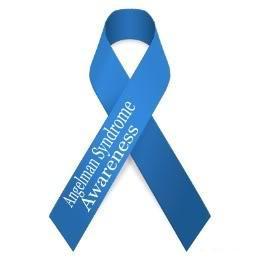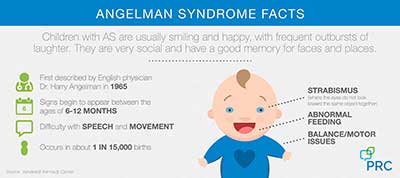ATTENTION
For the best experience on our site, please turn off compatibility view in the tools menu, or use a different browser.
 International Angelman Day is February 15
International Angelman Day is February 15
It was inspired, he said, by a work of art: “Boy with a Puppet” (or “A Child With a Drawing”) by Giovanni Francesco Caroto.
For English pediatrician Harry Angelman, the painting inspired his choice of the title, “Puppet Children,” to describe three children he had seen in his practice in 1965.
A Flash of Inspiration
As he described it:
“The history of medicine is full of interesting stories about the discovery of illnesses. The saga of Angelman's syndrome is one such story. It was purely by chance that nearly thirty years ago (e.g., circa 1964) three handicapped children were admitted at various times to my children's ward in England. They had a variety of disabilities and although at first sight they seemed to be suffering from different conditions I felt that there was a common cause for their illness. The diagnosis was purely a clinical one because in spite of technical investigations which today are more refined I was unable to establish scientific proof that the three children all had the same handicap. In view of this I hesitated to write about them in the medical journals. However, when on holiday in Italy I happened to see an oil painting in the Castelvecchio Museum in Verona called ... a Boy with a Puppet. The boy's laughing face and the fact that my patients exhibited jerky movements gave me the idea of writing an article about the three children with a title of Puppet Children. It was not a name that pleased all parents but it served as a means of combining the three little patients into a single group. Later the name was changed to Angelman syndrome. This article was published in 1965 and after some initial interest lay almost forgotten until the early eighties.”
–From “Harry Angelman and the History of AS,” from the Angelman Syndrome Foundation
From Observance to Science
As Angelman noted, by the early 1980s more cases were being reported, with genetic research conducted later in the decade eventually identifying the chromosomal abnormality in approximately half of the children diagnosed with the syndrome.
Angelman syndrome (AS) causes developmental delay and neurological problems. It occurs in about 1 in 15,000 births. Currently there are approximately 490,000 people worldwide with AS.
At this time there is no cure.
Diagnosis
Signs begin to appear between the ages of 6-12 months: difficulty with speech and movement, strabismus (where the eyes do not look toward the same object together), abnormal feeding, balance/motor issues.
The diagnosis of Angelman syndrome is based on:
- A history of delayed motor milestones and then later a delay in general development, especially of speech.
- Unusual movements including fine tremors, jerky limb movements, hand flapping and a wide-based, stiff-legged gait.
- Characteristic facial appearance (but not in all cases).
- A history of epilepsy and an abnormal EEG tracing.
- A happy disposition with frequent laughter.
- A deletion or inactivity on chromosome 15 by array comparative genomic hybridization (aCGH) or by BACs-on-Beads technology.
Success Story
Alex: A LAMP Success Story: Like most children with Angelman Syndrome, Alex only communicated with natural gestures. Despite working with several different devices, he wasn’t able to maintain consistency. But once he received his Accent® with LAMP Words for Life®, it opened up a whole new world for Alex and his family.
Read the story
Infographic

Click image to download a larger version
Fact Sheet
Links
Copyright © PRC-Saltillo. All Rights Reserved.

















 International Angelman Day is February 15
International Angelman Day is February 15
